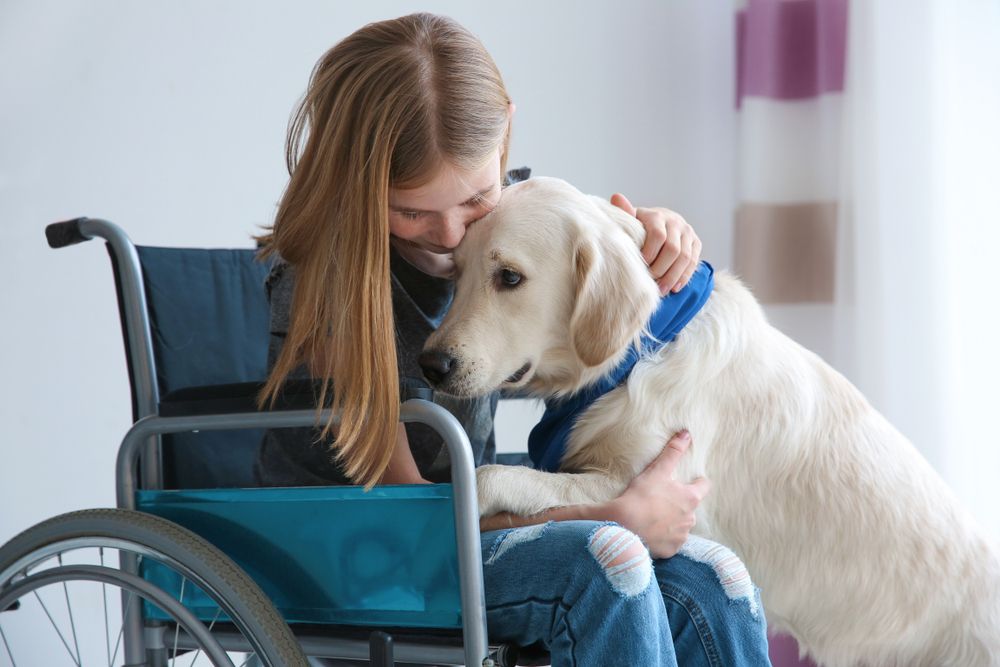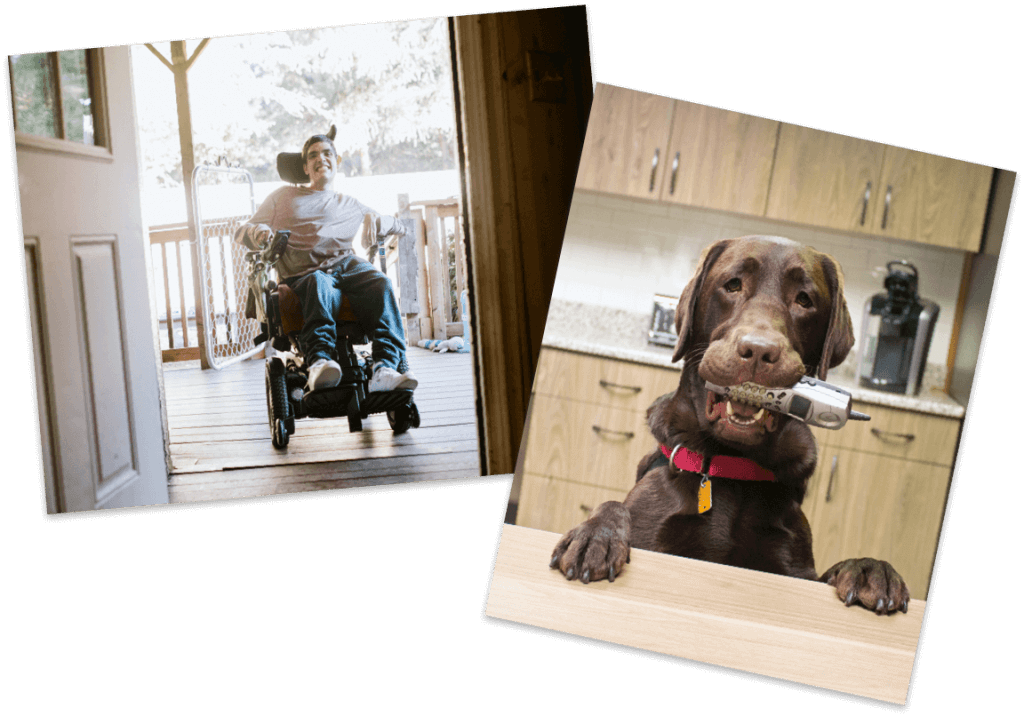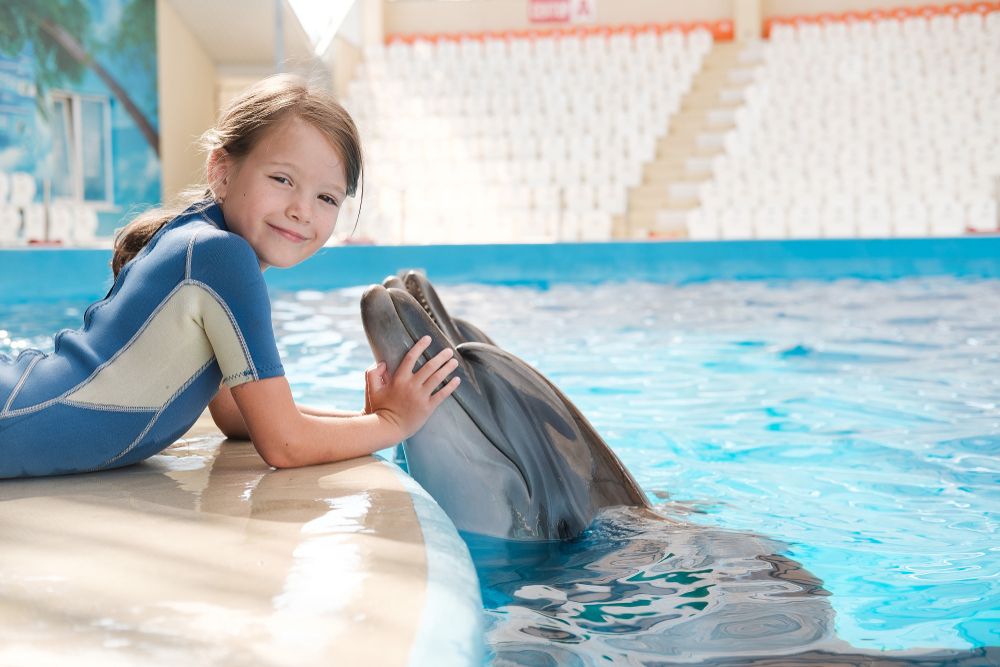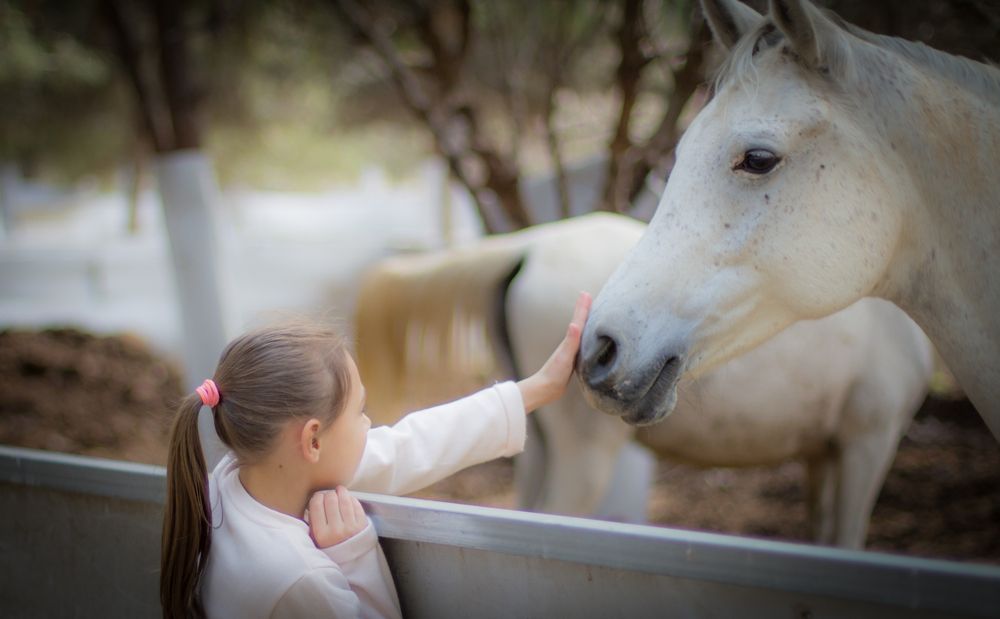While most of us are familiar with service dogs and the role they play in their owners’ lives, many people don’t know much about therapy animals for kids with disabilities. Animal-assisted therapy (AAT) harnesses the positive traits of animals and uses them to improve the lives of those in physical or mental pain.
Animal-assisted therapy for children has become increasingly popular, as it’s often easier for kids with disabilities to relate to animals than other people. In this blog, we’ll dig into the benefits of animal therapy, how it works, and which animals are typically used.
What Is Animal-Assisted Therapy?
Animal-assisted therapy uses companion animals to help people recover from health problems or manage certain medical conditions. AAT seeks to improve a person’s quality of life through the comfort and enjoyment of spending quality time with animals. Rather than being a one-time event, AAT takes place over time during a series of structured therapy sessions.
Therapy animals often visit patients in hospitals, retirement homes, or hospice care facilities. However, they may also be utilized for in-home therapy. Unlike emotional support or service dogs, therapy animals usually work with more than one person and are supervised by a trained handler.

In this blog, we’ll focus specifically on how therapy animals can benefit the lives of kids with disabilities.
What Are the Different Types of Therapy Animals?
Therapy animals can be broken into three major categories: assisted therapy animals, facility therapy animals, and therapeutic visitation animals. All three of these categories of therapy animals can work with both adults and children, but they play unique roles depending on each situation.
Assisted Therapy Animals
Assisted therapy animals typically work with physical or occupational therapists to help people reach specific rehabilitation or movement goals. These objectives may include limb movement, fine motor skills, or other motion-related activities of daily life. Assisted therapy animals usually work in rehabilitation facilities alongside a trained handler.
Facility Therapy Animals
Facility therapy animals are most frequently found in retirement communities, nursing homes, and hospice facilities. They’re trained to keep individuals with mental illnesses (e.g. Alzheimer’s) from wandering or getting confused. Like assisted therapy animals, they’re handled by a trainer.
Therapeutic Visitation Animals
Therapeutic visitation animals are household pets that owners take to visit rehabilitation facilities, nursing homes, and hospitals. They may also visit schools, workplaces, and other public facilities to reduce anxiety, brighten spirits, or provide motivation, among other things.

UDS Can Help You Live A Fuller Life With Our Comprehensive Services:
Planning & Support – Our dedicated planning & support teams help manage the care and services you need.
Personal Care & Independence – We’ve helped people with disabilities live more independently in their own homes since 1965.
Enrichment & Life Skills – Our variety of programs is dedicated to building skills for living well with a disability.
Which Children Can Benefit From Animal-Assisted Therapy?
Animal-assisted therapy is useful for children with a wide range of physical, emotional, and mental disabilities. Because of its expansive range of benefits, AAT is typically used in tandem with other types of therapy or treatments. Animal-assisted therapy has proven helpful for children with the following conditions:
- Autism spectrum disorder
- Behavioral disorders
- Cerebral palsy
- Intellectual or developmental disabilities
- Muscular dystrophy
- Post-traumatic stress disorder
- Traumatic brain injuries
Animal-Assisted Therapy and Autism
Animal-assisted therapy is particularly effective when it comes to children with autism spectrum disorder, including Asperger syndrome. One of the main benefits of animal therapy is the animal’s ability to act as a buffer between children and other people. This can give kids with autism valuable space so they can be more relaxed in social situations.
Therapy animals can also provide assistance to children with autism-induced anxiety. This includes pawing or nose-nudging to interrupt repetitive behaviors, obstacle avoidance, and retrieval of a parent or cell phone during anxiety attacks. Some therapy animals are also trained in deep pressure touch stimulation, which involves using their body weight to regulate anxiety or other negative emotions.

What Are the Benefits of Therapy Animals for Kids?
There are a wide range of benefits associated with animal-assisted therapy, especially when it comes to children. Involving animals helps create a therapeutic alliance that sometimes can’t be achieved between children and their parents or adult therapists.
Physical Benefits of Animal Therapy for Children
Let’s take a closer look at the many physical benefits AAT provides to children. Animal-assisted therapy can:
- Reduce blood pressure
- Improve cardiovascular health
- Reduce or alleviate pain
- Hone fine motor skills
- Improve independent or assisted movement
- Increase amounts of exercise
- Improve joint movement
- Expedite recovery time from surgeries or procedures
Emotional Benefits of Therapy Animals for Kids
One of the biggest emotional benefits of AAT is the combined focus on the child and the animal. Rather than solely focusing on the child — which is often counterproductive — the focus is shared with the animal’s actions. This helps reduce the child’s self-consciousness and can open them up to the full benefits of therapy.
Animal-assisted therapy may also:
- Enhance self-esteem and self-confidence
- Increase empathy, compassion, and nurturing
- Reduce stress
- Promote greater emotional stability
- Enhance bonding and trust
- Reduce anxiety and feelings of isolation or loneliness
- Increase feelings of security, happiness, and hope
- Reduce symptoms of depression and anxiety
Mental Benefits of Therapy Animals for Kids
There are also many mental and social benefits of animal therapy for children. In most cases, therapy animals attract other people, providing opportunities for kids with disabilities to develop social skills. They can be interacted with by others, unlike service dogs that shouldn’t be distracted while working.
Children with disabilities often feel and are perceived as “different” in a negative way, which can stunt their ability to relate to others. However, these feelings can be reduced by the presence of a therapy animal. Along with acting as a best friend, the therapy animal helps the child with disabilities make more human friends.
Animal-assisted therapy for children can also:
- Facilitate personal and social development
- Help children set boundaries and respect personal space
- Improve verbal and non-verbal communication skills
- Enhance planning and organizational skills
- Demonstrate how to take responsibility for one’s actions
- Improve problem-solving skills through giving commands
- Reduce symptoms of ADHD, PTSD, and autism
- Improve levels of interest, focus, and motivation

Which Animals Are Used in Animal-Assisted Therapy for Children?
Dogs are the most frequently used animals when it comes to animal-assisted therapy due to their naturally loving and supportive nature. A few of the most common therapy dogs for children with disabilities include golden retrievers, German shepherds, collies, cavalier King Charles spaniels, and Yorkies. Along with dogs, a variety of other animals can be used for AAT, including:
- Cats
- Guinea pigs
- Rabbits
- Birds
- Fish
- Miniature pigs
- Llamas
- Alpacas
- Horses
- Dolphins
We’ll take a closer look at horse- and dolphin-assisted therapy below.
Horse-Assisted Therapy
Horse-assisted therapy has proven effective for a variety of speech, occupational, emotional, and physical disabilities. In fact, horse-assisted therapy is often especially beneficial for individuals with muscular-related disabilities, like cerebral palsy.
There are two main types of horse-assisted therapy: hippotherapy and therapeutic horseback riding.
- Hippotherapy uses a horse’s movement to guide the rider’s body in a way that’s similar to human walking. The goal is for the rider to react to the horse’s movement, which can improve both neurological and physical functions.
- Therapeutic horseback riding focuses on building a bond between horse and rider. Participants learn specific riding skills with focused rehabilitative purposes, improving their physical and emotional health.
Dolphin-Assisted Therapy
While it’s less common than other kinds of animal-assisted therapy, swimming with dolphins also has many benefits. Dolphin-assisted therapy is shown to benefit speech, motion, and some mental elements, like attention span.